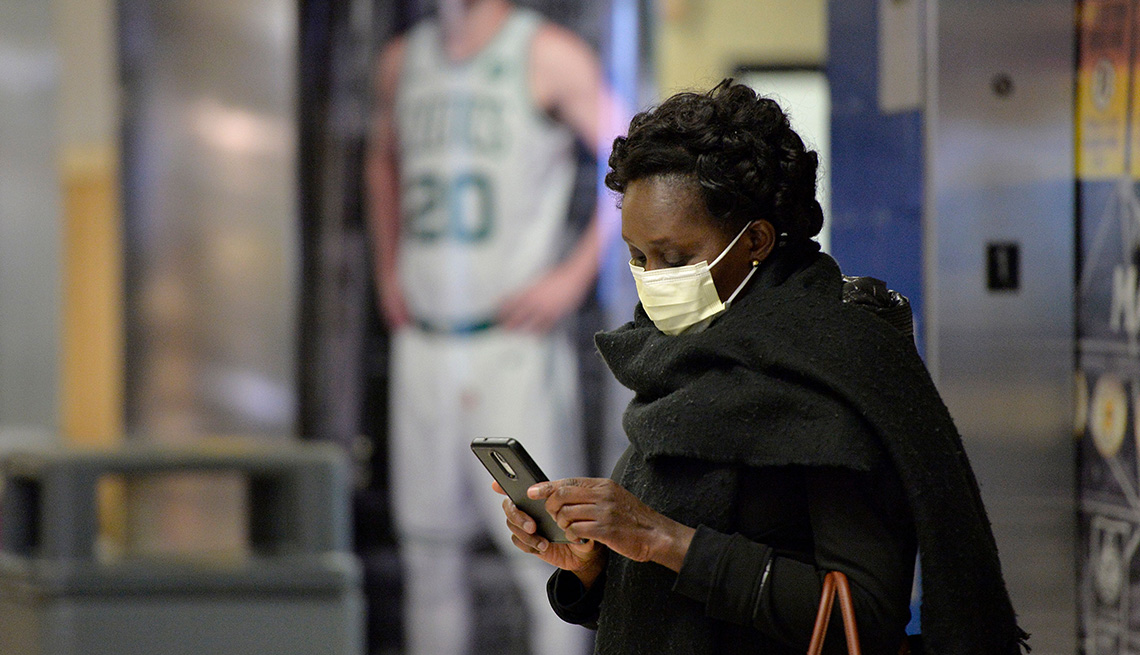
Higher covid-19 incidence in minority communities
- Select a language for the TTS:
- UK English Female
- UK English Male
- US English Female
- US English Male
- Australian Female
- Australian Male
- Language selected: (auto detect) - EN
Play all audios:

In minority areas, credible messengers often “don't have M.D.s behind their name; they don't have Ph.D.s behind their name,” he says. “They may be the local barber or the local
stylist in the hair salon. They have tremendous trust and credibility.” But social distancing guidelines and stay-at-home orders mean that most barbershops, churches and community centers
are closed. This has left a big gap in communication channels in neighborhoods across the country, Thomas says. “Who’s making sure that they have the information, the evidence-based
information, to help dispel myths, to shut down conspiracy theories and to ensure that African Americans recognize, ‘Hey, this disease is affecting us’?” he asks. Beyond culturally relevant
communication strategies, experts say more data — especially statistics that break down COVID-19’s impact by race and ethnicity — is also important. Knowing who is “in the crosshairs of the
epidemic” can lead to more testing sites and health services in the areas that need it most, Thomas says. “That’s what we have to do right now, to bend the curve,” observes Carlos
Rodríguez-Díaz, associate professor of prevention and community health at the George Washington University Milken Institute School of Public Health. “We need to bring resources to the
community, because we know what’s happening.” ECONOMIC FACTORS COMPLICATE There are also social and economic elements at play, according to experts. More than 1 in 3 (35 percent) adults
under age 65 with household incomes below $15,000 are at higher risk of serious illness if infected with the coronavirus, compared to about 1 in 7 (16 percent) of adults with household
incomes greater than $50,000, a report from the KFF shows. Without a vaccine or approved drug therapies, health officials say one of the best ways to decrease the risk of infection from
the coronavirus is to keep a physical distance from other people and to stay home as much as possible. But for many in minority communities, that is not an option. “If you work and you
cannot work from home, then you have to make a very difficult decision” about how you are going to put food on the table and pay rent, Rodríguez-Díaz says. “And, therefore, you probably
decide to risk your health and expose yourself or your family by actually working.” Data from the U.S. Bureau of Labor Statistics show that fewer than 20 percent of black workers and roughly
16 percent of Hispanic ones are able to telecommute. About two-thirds of employed Hispanic adults say they would not get paid if the coronavirus caused them to miss work for two weeks or
more, a Pew Research Center survey found. “African Americans and Latinos and other minority groups are the ones out there in the warehouse, emptying food trucks, delivering your Grubhub or
Uber Eats. They’re out there at risk” for catching the coronavirus, Thomas says. Health experts, including Birx, stress that while African Americans and other minority groups are not more
inherently susceptible to getting infected by the coronavirus, they are more likely to have a harder time recovering if they are infected. “We experience social factors that are constantly
putting us in a disadvantaged place to respond to an epidemic and to recover from diseases,” Rodríguez-Díaz says, pointing to unstable housing and lack of access to health care as two of the
circumstances that aggravate health outcomes and disproportionately affect minority populations. “Social factors represent a significant [role] in our ability to be healthy. And if we don’t
have access to those social resources, then we are in worse conditions to deal with a pandemic.”
